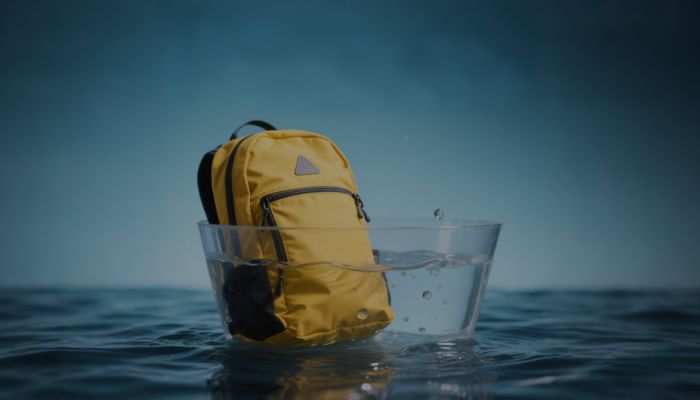“Waterproof” Doesn’t Always Mean What You Think
The term “waterproof backpack” is often misleading. Many people assume it means completely watertight, only to discover soaked gear after a heavy rain or water crossing. In truth, waterproofing varies—some packs resist splashes, while others can survive full submersion. Understanding these levels is essential before your next trip.
Waterproof Fabric ≠ Waterproof Construction
A backpack may use waterproof fabric like TPU or coated nylon, but seams and zippers are common weak points. Unless those areas are sealed with waterproof tape or welded shut, water can still seep in. A truly waterproof backpack needs both waterproof materials and sealed construction.
Match Your Backpack to Your Activity
-
Daily commute/light hiking: A water-resistant pack with a rain cover is usually enough.
-
Backpacking/hiking: Look for seam-sealed backpacks and always carry a rain cover.
-
Canyoning/cycling/water sports: Choose roll-top dry bags with at least an IPX5 rating.
-
Extreme conditions: For long periods in water, use fully welded dry bags designed for full immersion.
How to Maintain a Waterproof Backpack
Even the best waterproof coating will degrade over time. Sun exposure, heat, and folding can all cause damage. After each use, clean your pack with a damp cloth and let it air dry—never use a dryer or washing machine. Regularly inspect zippers and seams for signs of wear.
Common Myths You Should Avoid
-
Myth 1: Machine washing is fine – It can ruin waterproof coatings. Always hand wash.
-
Myth 2: Splash test equals field proof – Lab demos don’t match real-world storms.
-
Myth 3: You don’t need a rain cover – It adds extra protection and keeps dirt away.
Conclusion:
Don’t let marketing buzzwords fool you. A quality waterproof backpack should match your specific needs and withstand real-life conditions. Choose smart, pack smart—and stay dry wherever your journey takes you.




